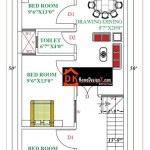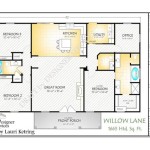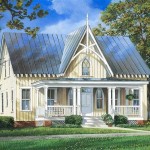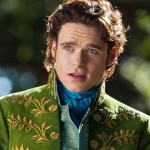A beach house plan is a blueprint or design that outlines the layout, structure, and features of a house intended to be built on or near a beach. It typically includes detailed information about the number of rooms, the size and shape of each room, the location of windows and doors, the type of materials to be used for construction, and other relevant details.
Beach house plans are often designed to take advantage of the unique characteristics of beach environments, such as the ocean views, the sound of the waves, and the salty air. They may incorporate features such as large windows, open floor plans, and outdoor living spaces to maximize the enjoyment of the beach lifestyle. Beach house plans can also include special considerations for building in a coastal environment, such as the use of hurricane-resistant materials and the elevation of the house above flood levels.
In the following sections, we will explore the key elements of a beach house plan, discuss the factors to consider when choosing a plan, and provide tips for designing a beach house that meets your needs and aspirations.
When planning a beach house, there are several key points to consider:
- Location: Choose a location that offers the desired views, access to the beach, and protection from storms.
- Size: Determine the number of bedrooms, bathrooms, and living spaces needed to accommodate your family and guests.
- Layout: Design a layout that maximizes natural light, ventilation, and views while also providing privacy and functionality.
- Materials: Select durable materials that can withstand the harsh coastal environment, such as concrete, brick, or HardiePlank siding.
- Windows and doors: Choose impact-resistant windows and doors to protect against storms and hurricanes.
- Outdoor living: Create outdoor living spaces, such as decks, patios, or screened porches, to enjoy the beach environment.
- Sustainability: Incorporate sustainable features, such as solar panels, rainwater harvesting, and energy-efficient appliances, to reduce the environmental impact.
- Accessibility: Consider accessibility features, such as ramps, wider doorways, and roll-in showers, to ensure the home is accessible to all.
- Budget: Determine a realistic budget for the project, including the cost of land, construction, and furnishings.
By carefully considering these factors, you can create a beach house plan that meets your specific needs and allows you to enjoy the unique lifestyle that beach living offers.
Location: Choose a location that offers the desired views, access to the beach, and protection from storms.
When choosing a location for your beach house, there are several key factors to consider:
Views: What type of views do you want from your beach house? Do you want to be able to see the ocean from every room? Or are you more interested in views of the dunes, the marsh, or the surrounding vegetation? Consider the orientation of the lot and the position of the house on the lot to maximize the desired views.
Access to the beach: How important is it to have easy access to the beach? Do you want to be able to walk to the beach from your house? Or are you willing to drive a short distance? Consider the distance to the beach and the accessibility of the beach access points.
Protection from storms: Hurricanes and other coastal storms can pose a significant threat to beach houses. It is important to choose a location that is protected from storms. Consider the elevation of the lot, the presence of dunes or other natural barriers, and the history of flooding in the area.
In addition to these key factors, you may also want to consider other factors such as the proximity to amenities, the availability of public transportation, and the overall character of the neighborhood. By carefully considering all of these factors, you can choose a location for your beach house that meets your specific needs and desires.
Size: Determine the number of bedrooms, bathrooms, and living spaces needed to accommodate your family and guests.
The size of your beach house will depend on a number of factors, including the number of people who will be using it, the frequency of use, and the types of activities that will be taking place. If you plan to use your beach house primarily for weekend getaways and vacations, you may be able to get by with a smaller house. However, if you plan to use your beach house as a primary residence or for extended stays, you will need a larger house with more bedrooms, bathrooms, and living spaces.
Here are some things to consider when determining the size of your beach house:
- Number of bedrooms: How many bedrooms do you need? Consider the number of people who will be using the house regularly, as well as the number of guests you may have. It is also a good idea to have at least one extra bedroom for guests or for use as a home office or den.
- Number of bathrooms: How many bathrooms do you need? Consider the number of bedrooms in the house, as well as the number of people who will be using the house. It is also a good idea to have at least one bathroom for guests.
- Living spaces: What types of living spaces do you need? Do you need a formal living room, a family room, a dining room, and a kitchen? Or can you get by with a more open floor plan with fewer defined spaces? Consider how you will be using the house and what types of activities you will be doing.
Once you have considered all of these factors, you can start to get a sense of the size of beach house that you need. It is always a good idea to err on the side of caution and choose a house that is slightly larger than you think you need. This will give you more flexibility in the future and allow you to accommodate unexpected guests or changes in your lifestyle.
In addition to the number of bedrooms, bathrooms, and living spaces, you should also consider the size of the outdoor living spaces. If you plan to spend a lot of time outdoors, you will need a house with a large deck, patio, or porch. You may also want to consider a house with a pool or hot tub.
Layout: Design a layout that maximizes natural light, ventilation, and views while also providing privacy and functionality.
Maximize natural light
Natural light can make a beach house feel more spacious and inviting. When designing your layout, consider the following tips to maximize natural light:
- Orient the house to face the sun. This will allow natural light to enter the house throughout the day.
- Use large windows and doors. This will allow more natural light to enter the house and provide views of the outdoors.
- Use skylights and solar tubes. These can be installed in areas where it is difficult to get natural light from windows and doors.
Maximize ventilation
Good ventilation is important for keeping a beach house cool and comfortable. When designing your layout, consider the following tips to maximize ventilation:
- Use cross-ventilation. This is achieved by placing windows and doors on opposite sides of the house. This allows air to flow through the house and keep it cool.
- Use ceiling fans. Ceiling fans can help to circulate air and keep the house cool.
- Use exhaust fans. Exhaust fans can be installed in bathrooms and kitchens to remove moisture and odors.
Maximize views
Many people choose to build a beach house in order to enjoy the views of the ocean, the dunes, or the surrounding vegetation. When designing your layout, consider the following tips to maximize views:
- Place the main living areas on the side of the house that faces the best views. This will allow you to enjoy the views from the inside of your house.
- Use large windows and doors. This will allow you to have more expansive views of the outdoors.
- Create outdoor living spaces. Decks, patios, and porches can be great places to enjoy the views and the outdoors.
Provide privacy and functionality
While it is important to maximize natural light, ventilation, and views, it is also important to provide privacy and functionality. When designing your layout, consider the following tips:
- Use curtains or blinds to control the amount of light that enters the house. This will allow you to have privacy when you want it.
- Use screens to keep out insects. This will allow you to enjoy the outdoors without being bothered by bugs.
- Create separate spaces for different activities. For example, you may want to have a separate living room, dining room, and family room. This will allow you to have privacy and quiet when you need it.
By following these tips, you can create a beach house layout that maximizes natural light, ventilation, and views while also providing privacy and functionality.
Materials: Select durable materials that can withstand the harsh coastal environment, such as concrete, brick, or HardiePlank siding.
The harsh coastal environment can take a toll on a beach house. The salt air can corrode metal, the sun can fade paint, and the wind can damage siding. When choosing materials for your beach house, it is important to select durable materials that can withstand these harsh conditions.
- Concrete
Concrete is a durable material that is resistant to fire, rot, and insects. It is also a good choice for areas that are prone to hurricanes and other coastal storms. Concrete can be used for foundations, walls, and floors.
- Brick
Brick is another durable material that is resistant to fire, rot, and insects. It is also a good choice for areas that are prone to hurricanes and other coastal storms. Brick can be used for walls, chimneys, and patios.
- HardiePlank siding
HardiePlank siding is a fiber cement siding that is resistant to fire, rot, and insects. It is also a good choice for areas that are prone to hurricanes and other coastal storms. HardiePlank siding can be used to create a variety of looks, from traditional to contemporary.
- Other durable materials
Other durable materials that can be used for beach houses include stucco, tile, and metal roofing. Stucco is a cement-based plaster that is resistant to fire and water. Tile is a durable and versatile material that can be used for floors, walls, and countertops. Metal roofing is a lightweight and durable material that is resistant to fire, rot, and insects.
By choosing durable materials for your beach house, you can help to protect your investment and enjoy your beach house for many years to come.
Windows and doors: Choose impact-resistant windows and doors to protect against storms and hurricanes.
Windows and doors are one of the most important elements of a beach house. They provide natural light and ventilation, and they can also offer beautiful views of the ocean or the surrounding landscape. However, windows and doors can also be a weak point in a beach house, especially during storms and hurricanes. High winds and flying debris can shatter ordinary windows and doors, allowing water and wind to enter the house and cause extensive damage.
- Impact-resistant windows
Impact-resistant windows are designed to withstand the impact of flying debris, such as wind-borne missiles and hail. They are made with laminated glass, which is two or more layers of glass that are bonded together with a strong adhesive. The adhesive helps to hold the glass together even if it is cracked or broken, preventing it from shattering into dangerous shards.
- Impact-resistant doors
Impact-resistant doors are also made with laminated glass. They are typically made of steel or aluminum, and they are designed to withstand the force of a hurricane-force wind. Impact-resistant doors can help to protect your home from wind-driven rain and debris, and they can also help to prevent burglars from breaking into your home.
- Storm shutters
Storm shutters are another option for protecting your windows and doors from storms and hurricanes. Storm shutters are made of metal or plywood, and they are designed to be installed over windows and doors before a storm arrives. Storm shutters can help to protect your windows and doors from wind-borne debris, and they can also help to reduce the amount of wind and rain that enters your home.
- Hurricane-rated hardware
In addition to impact-resistant windows and doors, it is also important to use hurricane-rated hardware on your windows and doors. Hurricane-rated hardware is designed to withstand the high winds and forces associated with hurricanes. It includes things like hurricane-rated hinges, locks, and bolts.
By choosing impact-resistant windows and doors, and by using hurricane-rated hardware, you can help to protect your beach house from the damaging effects of storms and hurricanes.
Outdoor living: Create outdoor living spaces, such as decks, patios, or screened porches, to enjoy the beach environment.
Decks
Decks are a great way to enjoy the outdoors and extend your living space. They can be built from a variety of materials, including wood, composite, and PVC. Wood decks are the most traditional and affordable option, but they require more maintenance than composite or PVC decks. Composite decks are made from a combination of wood and plastic, and they are more durable and require less maintenance than wood decks. PVC decks are made from polyvinyl chloride, and they are the most durable and require the least maintenance of all three types of decking materials.
Patios
Patios are another popular option for outdoor living spaces. They are typically made from concrete, brick, or pavers. Concrete patios are the most durable and affordable option, but they can be hot to the touch in the summer. Brick patios are more expensive than concrete patios, but they are also more durable and attractive. Paver patios are made from individual pavers that are set in a bed of sand or gravel. Paver patios are more expensive than concrete or brick patios, but they offer a wider variety of design options.
Screened porches
Screened porches are a great way to enjoy the outdoors without being bothered by insects. They are typically built with a screen enclosure that keeps out bugs and other pests. Screened porches can be attached to the house or they can be freestanding. Attached screened porches are more expensive than freestanding screened porches, but they offer more protection from the elements. Freestanding screened porches are less expensive than attached screened porches, but they offer less protection from the elements.
Other outdoor living spaces
In addition to decks, patios, and screened porches, there are a number of other outdoor living spaces that you can create to enjoy the beach environment. These include things like gazebos, pergolas, and fire pits. Gazebos are freestanding structures with a roof and open sides. They provide shade and shelter from the sun and rain. Pergolas are similar to gazebos, but they have a more open design. They provide shade from the sun, but they do not offer protection from the rain. Fire pits are a great way to enjoy the outdoors on cool evenings. They can be used for cooking, roasting marshmallows, or simply gathering around and enjoying the flames.
By creating outdoor living spaces, you can extend your living space and enjoy the beach environment to the fullest.
Sustainability: Incorporate sustainable features, such as solar panels, rainwater harvesting, and energy-efficient appliances, to reduce the environmental impact.
Solar panels
Solar panels are a great way to reduce your reliance on fossil fuels and generate your own clean energy. They can be installed on the roof of your beach house or on a ground-mounted system. Solar panels convert sunlight into electricity, which can be used to power your home’s appliances, lights, and heating and cooling systems. Solar panels can save you money on your energy bills and help to reduce your carbon footprint.
Rainwater harvesting
Rainwater harvesting is another great way to reduce your reliance on municipal water supplies. Rainwater can be collected from your roof and stored in a cistern or tank. The collected rainwater can then be used for watering your lawn and garden, washing your car, or flushing your toilets. Rainwater harvesting can help to reduce your water bills and conserve water, which is a valuable resource.
Energy-efficient appliances
Energy-efficient appliances use less energy to operate than traditional appliances. This can help to reduce your energy bills and your carbon footprint. When choosing appliances for your beach house, look for models that have the ENERGY STAR label. ENERGY STAR appliances meet strict energy efficiency standards set by the U.S. Environmental Protection Agency (EPA).
Other sustainable features
In addition to solar panels, rainwater harvesting, and energy-efficient appliances, there are a number of other sustainable features that you can incorporate into your beach house plan. These include things like using recycled materials, installing a green roof, and choosing low-VOC (volatile organic compound) paints and finishes. By incorporating sustainable features into your beach house plan, you can help to reduce your environmental impact and create a more sustainable home.
By incorporating sustainable features into your beach house plan, you can reduce your environmental impact and create a more sustainable home.
Accessibility: Consider accessibility features, such as ramps, wider doorways, and roll-in showers, to ensure the home is accessible to all.
Accessibility features are important for ensuring that a beach house is accessible to all, including people with disabilities. By incorporating accessibility features into your beach house plan, you can create a home that is safe, comfortable, and enjoyable for everyone.
- Ramps
Ramps are sloped surfaces that allow people with wheelchairs or other mobility devices to enter and exit the house without having to use stairs. Ramps should be at least 36 inches wide and have a slope no greater than 1:12. They should also have handrails on both sides for safety.
- Wider doorways
Wider doorways are necessary to accommodate wheelchairs and other mobility devices. Standard doorways are typically 32 inches wide, but wider doorways should be at least 36 inches wide. This will allow people with mobility devices to easily enter and exit rooms.
- Roll-in showers
Roll-in showers are showers that are designed to be accessible to people with wheelchairs. They have a sloped entryway and no curb, which allows people to roll their wheelchairs directly into the shower. Roll-in showers should also have grab bars for safety.
- Other accessibility features
In addition to ramps, wider doorways, and roll-in showers, there are a number of other accessibility features that you can incorporate into your beach house plan. These include things like lever door handles, accessible kitchen counters, and grab bars in the bathroom.
By incorporating accessibility features into your beach house plan, you can create a home that is safe, comfortable, and enjoyable for everyone.
Budget: Determine a realistic budget for the project, including the cost of land, construction, and furnishings.
Before you start planning your beach house, it is important to determine a realistic budget for the project. This will help you to make informed decisions about the size, style, and features of your beach house. It is important to include all costs in your budget, including the cost of land, construction, and furnishings.
- Cost of land
The cost of land will vary depending on the location, size, and features of the lot. It is important to factor in the cost of any site preparation, such as clearing the land or installing utilities.
- Cost of construction
The cost of construction will depend on the size, complexity, and materials used in your beach house. It is important to get bids from several contractors before you start construction. This will help you to get the best price for your project.
- Cost of furnishings
The cost of furnishings will vary depending on the style and quality of the furnishings you choose. It is important to set a budget for furnishings before you start shopping. This will help you to avoid overspending.
- Other costs
In addition to the cost of land, construction, and furnishings, there are a number of other costs that you may need to consider in your budget. These costs include things like permits, insurance, and property taxes.
By determining a realistic budget for your project, you can help to ensure that your beach house is completed on time and within budget.










Related Posts








